目次
- 1 Israel’s Syria Strike: Protection or Power Play?
- 1.1 The Sweida Massacre: Direct Trigger for the Airstrikes
- 1.2 Israel’s Multi-Layered Calculations: Stated Reasons vs. True Objectives
- 1.3 International Law Concerns and History of the “Begin Doctrine”
- 1.4 Major Powers’ Calculations and Complex International Relations
- 1.5 Syria’s Complex Internal Situation
- 1.6 Middle East Situation’s Ripple Effects on Japan
- 1.7 Military Aspects of Israeli Society
- 1.8 International Response and Future Outlook
Israel’s Syria Strike: Protection or Power Play?
On July 16, 2025, Israeli forces bombed the Syrian interim government’s Ministry of Defense headquarters and areas around the presidential palace in Damascus. Syrian state media reported 3 dead and 34 wounded, while the Syrian Ministry of Health spokesperson reported at least 1 dead and 18 wounded. Local medical sources stated that 5 security force members were killed in the attack on the Defense Ministry building. This airstrike marked Israel’s third consecutive day of attacks on Syrian territory.
The Sweida Massacre: Direct Trigger for the Airstrikes
The immediate cause for these airstrikes was the severe sectarian clashes in Sweida Governorate in southern Syria. The violent fighting that erupted on July 13, 2025, between local nomads (Bedouin tribes) and the minority Druze Islamic community escalated to an unimaginable scale.
Casualty Reports and Timeline
Initially, the Syrian interim government announced on July 14 that over 30 people had died and nearly 100 were wounded. However, the situation rapidly deteriorated, with multiple organizations reporting the following:
Death Toll Reports by Various Organizations (Chronological)
- UK-based Syrian Observatory for Human Rights (Initial): At least 203 deaths since morning of July 13 (93 security forces, 71 Druze residents, 18 Bedouins)
- Syrian Network for Human Rights: 169 deaths reported
- UK-based Syrian Observatory for Human Rights (Updated): Revised upward to 248 (including 92 Druze)
- Local Security Officials: 300 deaths testified
- Comprehensive Report by July 16 morning: Over 250 deaths including 4 children, 5 women, and 138 soldiers and security forces
⚠️ Particularly Shocking Fact: At least 21 people were reportedly killed in “on-site executions,” with the Syrian Interior Ministry being accused of government forces and their allies executing 21 Druze civilians.
Syrian Government Response and Israeli Warning
The Syrian interim government deployed military units to Sweida to restore security. However, Israel claimed that military deployment in southern Syria near its border would endanger Israel, warning forces attacking the Druze to withdraw or face bombardment.
“Israel attacked the entrance to the military command in Damascus to ‘send a clear message'”
– Israeli Defense Forces Statement
Israeli Defense Minister Katz accused Syrian government forces of not preventing attacks on the Druze and actually being part of the problem, stating they would continue attacks until forces withdraw.
Israel’s Multi-Layered Calculations: Stated Reasons vs. True Objectives
1. Druze Protection as Justification and Reality
Israel continues military operations in Syria, citing protection of Druze residents in the occupied Golan Heights. Since Assad’s regime collapse in December 2024, Israel has been conducting the following activities:
- Expanding occupied territories in Quneitra and Daraa provinces
- Facilitating entry of Syrian Druze religious leaders into Israel, ignoring Syrian government jurisdiction
- Border crossing prevention operations (IDF calls crossings “criminal acts”)
“The IDF, Air Force, and other units are ‘working to save our Druze brothers and eliminate the regime’s gangs'”
– Prime Minister Netanyahu
2. Military Buildup and Expansion to “All of Syria”
IDF Chief of Staff Lt. Gen. Eyal Zamir ordered the military to further strengthen surveillance and attack capabilities in the region. Specific directives include:
Israeli Military Deployment and Policy
- Northern Command instructed to transfer forces to Syrian border
- Policy to “increase attack frequency and prevent attacks on Syrian Druze”
- Two divisions deployed in Golan Heights
- Air assets including drones and fighter jets ready for regional deployment
- Reinforcement of 210th Bashan Division forces
The IDF stated they are “attacking targets throughout Syria to protect them in the Sweida region, Jabal al-Druze area, and wherever necessary.” This is noted as a “military signal to shift regional power balance” beyond mere “border defense.”
3. Strategic Goal of Eliminating Iranian Influence
Gaza War and Weakening of the “Axis of Resistance”
The Gaza War beginning in October 2023 weakened Hamas in Gaza and Hezbollah in Lebanon through intense fighting with Israel.
Major Weapons Supplied by the US
- Tank shells and 155mm howitzer rounds
- Approximately 900kg heavy bombs
- Precision-guided air-to-ground missiles
- Bunker busters (earth-penetrating bombs)
These high-lethality weapons contributed positively to Israeli military operations, effectively decimating Hamas forces.
Assad Regime Collapse and Iran’s Loss of “Land Corridor”
The December 2024 collapse of Assad’s regime meant Iran’s loss of the “land corridor” (supply route connecting Iraq-Syria-Lebanon), decisively disadvantaging Iran and its allied forces in the Middle East.
“The fall of Assad’s regime is a direct result of the blows dealt to Hamas, Hezbollah, and Iran”
– Prime Minister Netanyahu
Details of the June 2025 “12-Day War”
“12-Day War” Timeline
- June 13: Israel launches massive military attack on Iran. Approximately 200 Israeli aircraft bomb over 100 sites including nuclear facilities
- Attack Results: Over 10 IRGC commanders and nuclear scientists killed
- June 14 onward: Oil storage facilities, fuel infrastructure, and Iranian state TV targeted
- Iranian Retaliation: Over 100 drones and hundreds of ballistic missiles launched
- June 21: US military joins, attacking 3 Iranian nuclear facilities
- Final Casualties: Iran – 430 dead, over 3,500 wounded / Israel – 28 casualties
- June 24: Fighting ends
Iranian Warning: Supreme Leader Ali Khamenei warned that Iran is prepared to respond to any new military attack and can deliver a greater blow than during the 12-day war.
4. Permanent Weakening of Syria’s Defense Capabilities
Israel repeatedly attacks Syrian air defense and research centers, pursuing the following objectives:
Israel’s Strategic Objectives
- Strip Syria of defense capabilities, creating conditions for unlimited airspace violations
- Destroy heavy artillery throughout Syria after occupying buffer zones
- Prevent Iran from smuggling weapons to Lebanon via Syria
- Create a “safe zone”
- Prevent chemical weapons and long-range missiles from falling into hostile hands
- Maintain southwestern Syria as a demilitarized zone at the border
- Prevent recurrence of “October 7 scenario” (Hamas surprise attack)
International Law Concerns and History of the “Begin Doctrine”
Contradiction with UN Charter Article 51
The international community widely criticizes Israel’s actions as violating the restrictive provisions of self-defense rights in UN Charter Article 51.
International Law Issues
- UN Charter prohibits resolution of conflicts by force, imposing obligation for peaceful resolution (Article 33)
- Israel’s admitted “preemptive strikes” noted as clear violations of UN Charter and international law
- UN condemnation for violating 1974 disengagement agreement
- UN Secretary-General: Agreement is “fully valid” and “no forces or activities should be in the separation area”
”Begin Doctrine” and Israel’s Suspected Nuclear Arsenal
History of the “Begin Doctrine”
- 1981: Attack on Iraq’s Osirak reactor
- 2007: Attack on Syria’s al-Kibar reactor (Operation Orchard)
- Sending false images to Syrian military radar
- Special forces guiding missiles with ground lasers
- Utilizing sophisticated operational capabilities
Western opinion is divided on this doctrine, with most politicians critical of Israel’s preference for force over diplomacy while Israel itself has suspected nuclear weapons.
Israel’s Nuclear Capabilities
- Neither confirms nor denies nuclear weapons possession (“silent deterrence” strategy)
- Nuclear technology research center near Dimona in Negev Desert
- Estimated to possess hundreds of nuclear bombs/warheads
- “Samson Option”: Final strategy to retaliate with nuclear weapons if severely damaged by enemies
Debate on “Anticipatory Self-Defense” and International Law Challenges
The “anticipatory self-defense” supported by Israel and the US differs from majority academic opinion, with its position in international law remaining difficult.
Warned Dangers: Each country’s independent interpretation of “imminent threat” could spread the concept, allowing exercise of self-defense even when threats are not imminent. Some experts note that accepting Israel’s logic could justify Hamas attacks.
Major Powers’ Calculations and Complex International Relations
United States: Between Strategic Asset and Strategic Burden
Solid Military Support and Value as Strategic Asset
Strategic Value Israel Provides to America
- Geographic Advantage: Located at Middle East crossroads
- Technical Contributions:
- Advanced missile defense system (Iron Dome)
- Cybersecurity technology
- Intelligence Provision: Valuable information on Iran, Hezbollah, Hamas
- Military Function: Means to maintain Middle East superiority and contain hostile forces
Common Anti-Iran Strategy and Countering the “Axis of Evil”
America and Israel share the common goal of deterring Iran’s regional ambitions and nuclear development.
US Middle East Strategy
Promoting “US-Israel-Arab alliance” to counter “Iran, Russia, China” as “axis of evil.” The currently discussed US-Saudi military agreement includes:
- Halting Chinese weapons purchases
- Restricting major Chinese investments
- US security guarantees and access to latest weapons
- Path to Israel-Saudi normalization
Strategic Burden and Risk of International Isolation
Challenges America Faces
- Rising anti-American sentiment in Arab and Islamic countries
- Diplomatic isolation from defending Israel at UN and other forums
- Risk of being drawn into Israel’s “reckless military actions”
- Financial burden of billions in annual military aid
- Negative impact on Global South understanding of democracy
Trump Administration’s Complex Response
Trump Administration Middle East Policy
- Basic Policy: “America First” – redirecting Middle East intervention funds to domestic infrastructure
- Israel-related:
- Requested cessation of Damascus bombing (Israel did not comply)
- Considering joining Israeli attacks on Iranian nuclear facilities
- Positive view: “Minor treaty violations occurred, but importantly it didn’t escalate to major war”
- Gaza-related:
- Promoting ceasefire and hostage release agreement (met with Qatar PM on July 17)
- “Middle East Riviera” concept (criticized as violating international law)
- Pro-Israel stance: Potential revival of Abraham Accords
Russia: Focused on Ukraine War with Declining Middle East Influence
Russia, as Iran’s ally, remained largely a bystander during the June 2025 Israel-Iran “12-Day War,” except for verbal condemnation.
Russia’s Current Situation
- Top Priority: “Special military operation” in Ukraine (Kremlin announcement)
- Capacity Shortage: No ability to aid other countries
- Middle East Policy Confusion: Declining influence after Assad regime collapse
- Diplomatic Response: In contact with Syria’s new rulers
- Criticism: Points to Israel’s violation of 1974 disengagement agreement
Greg Roman of Middle East Forum: “Russia’s Middle East policy is in shambles”
China’s Perspective: Concerns over “Axis of Resistance” Collapse
China’s Analysis and Position
- Collapse of “Axis of Resistance” and Israeli dominance may focus US strategic attention on Asia
- US-friendly Israel’s dominance threatens China’s Middle East influence expansion
- Clear Position: Never supports Iranian regime change through external military intervention
Iran’s Response and Nuclear Negotiation Pressure
Iran’s Situation
- International pressure to resume nuclear negotiations with US
- US and European trio set end of August as agreement deadline
- Iranian Foreign Ministry: Criticizes Israel’s continued military aggression and UN Security Council inaction
Syria’s Complex Internal Situation
Reality of Multi-Layered Structure
Current Syria is not under single central government control but in a complex “multi-layered structure”:
Power Structure Within Syria
- Syrian Interim Government (led by Interim President Sharaa)
- Called “disguised jihadists” by Israel
- Former Assad Forces
- Military, security, intelligence, criminal organizations gone underground
- Conducting anti-government activities nationwide
- March ambush by Assad remnants killed 13 security force members
- Sectarian/Tribal Forces (Druze, Bedouins, etc.)
- Foreign Influence Spheres (Israel, Iran, Turkey, etc.)
Middle East Situation’s Ripple Effects on Japan
Severe Humanitarian Crisis in Gaza
Although a ceasefire agreement in Gaza took effect on January 19, 2025, Israeli military attacks continue in the West Bank, with many civilians becoming casualties.
Report from Japanese MSF Staff Member
- Abnormal Food Price Inflation: One watermelon approximately $66
- Energy Crisis: Cooking with firewood due to lack of gas
- End of July Concerns:
- Hospital function cessation
- Drinking water shortage crisis
Ceasefire negotiations between Israel and Hamas continue, but the gap remains large between Hamas demanding complete IDF withdrawal and permanent ceasefire and Israel insisting on partial withdrawal and temporary ceasefire, with no agreement prospects.
Specific Impact Mechanism on Japanese Economy
How Middle East Tensions Affect Japanese Economy
- Increased maritime transport risks near conflict zones
- Insurance premium spikes
- Added to shipping costs
- Eventually increased consumer prices
Japan’s Vulnerability
- 90% of oil imports from Middle East
- Geopolitical risks concentrated in transport routes like Strait of Hormuz
- Risk of oil supply route disruption
- Expected vicious cycle: Trade deficit expansion → Currency depreciation → Inflation progression
Military Aspects of Israeli Society
Israel’s Conscription System and Society
- Employment Impact: Military service often a job requirement
- Cost of Draft Refusal: Extremely disadvantageous for future
- Non-Jewish Residents: Many volunteer despite exemption
- Druze: Considered “loyal minority,” many serve in military
- Career Military Benefits:
- Retirement in 40s
- High pension (approximately $8,000/month)
International Response and Future Outlook
UN and International Law Perspective
International Community Reactions
- Syria: Requests UN Security Council action on Israeli “acts of aggression”
- Egyptian Foreign Ministry: Condemns Israel for “exploiting power vacuum to further occupy Syrian territory and create complicity violating international law”
- UN Security Council: Scheduled meeting on Israeli attacks on Syria
- UN Forces: Warning of Israeli “serious violations” of ceasefire agreement
- Problem: UN Security Council permanent members’ dysfunction
Israel’s Long-term Strategy
Israel’s purpose in fomenting crisis in Syria is to intensify religious and ethnic conflicts, trigger long-term civil war, impede political stability, and obstruct peace processes.
Israel’s Strategic Objectives List
- Territorial expansion
- Permanent weakening of Syria’s defense capabilities
- Exploiting Syria’s internal instability
- Creating conditions for normalization under pressure
- Expanding influence of Israel, US, and Western nations in the region
Conclusion: Increasingly Complex Middle East and Uncertain Future
Israel appears to be using Druze protection in Syria as a pretext to exploit post-Assad chaos, establish security superiority, and further削g Iranian influence. However, these actions potentially violate international law and face restraint requests from the international community, particularly the United States.
Continuing Humanitarian Crisis
- About 3/4 of Syrian population facing humanitarian crisis
- Internally displaced: 6.8 million
- External refugees: 5.36 million
- Far from stability
Overall Middle East destabilization continues affecting Gaza’s humanitarian crisis and the global economy. This region involves multiple overlapping conflict axes, with the calculations of major powers – Russia accelerating “multipolarization,” China seeking Middle East influence expansion, and the US pursuing “America First 2.0” – all intersecting, ensuring the situation remains unpredictable.
With IDF Chief of Staff’s directive to increase attack frequency, the likelihood of short-term conflict resolution appears low. The international community, including Japan, must continue monitoring this complex situation while seeking continued humanitarian support and diplomatic solutions.
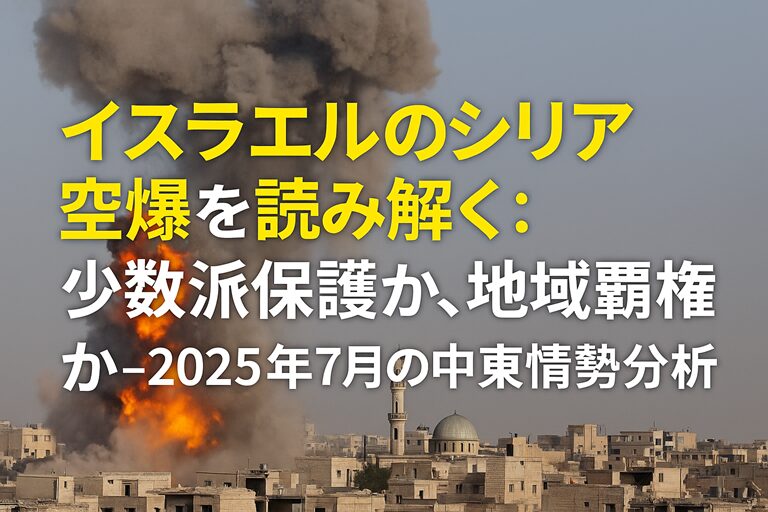



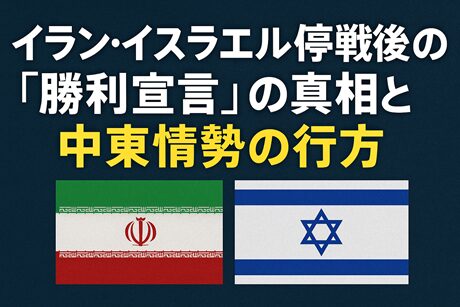

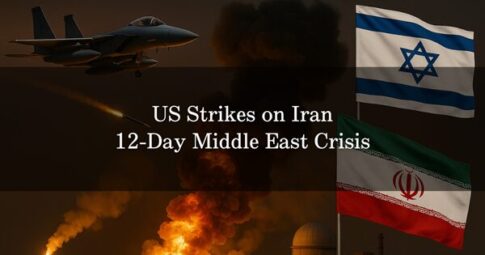

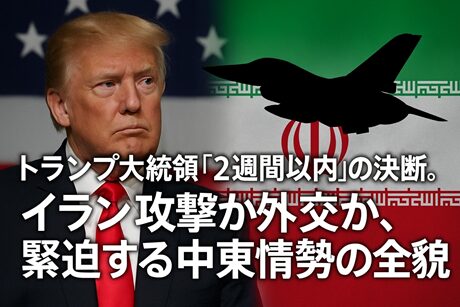

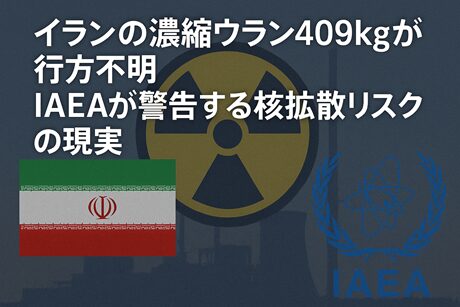






Leave a Reply